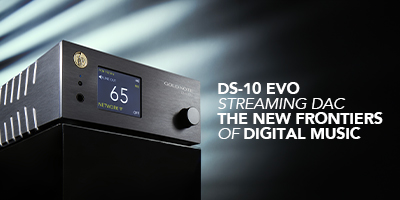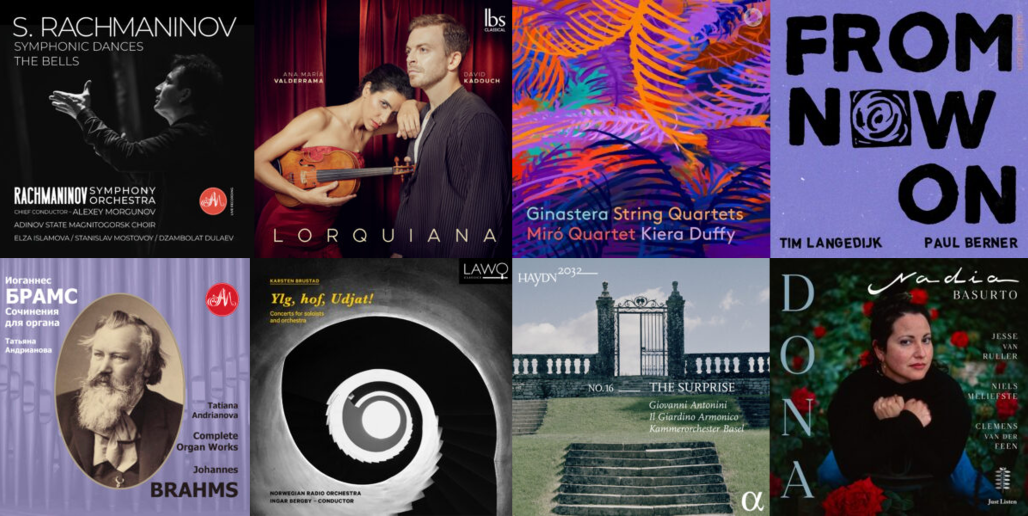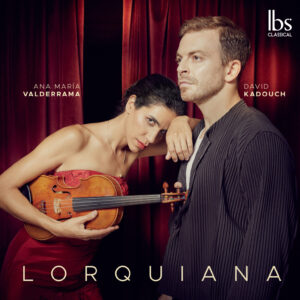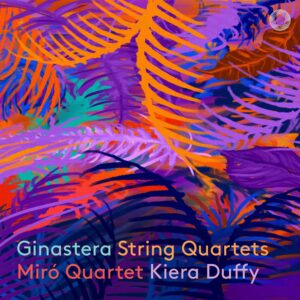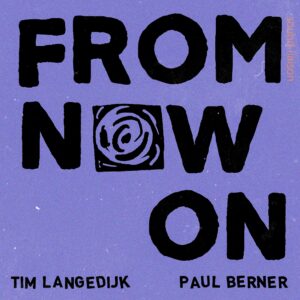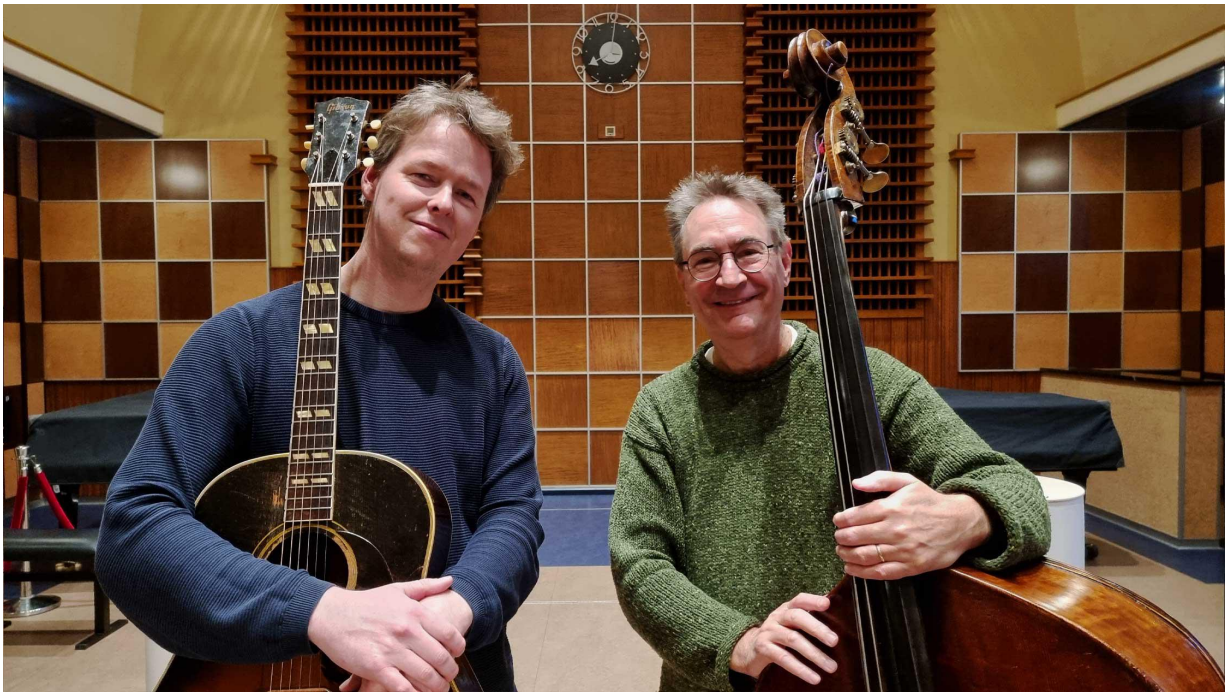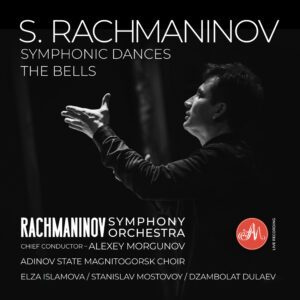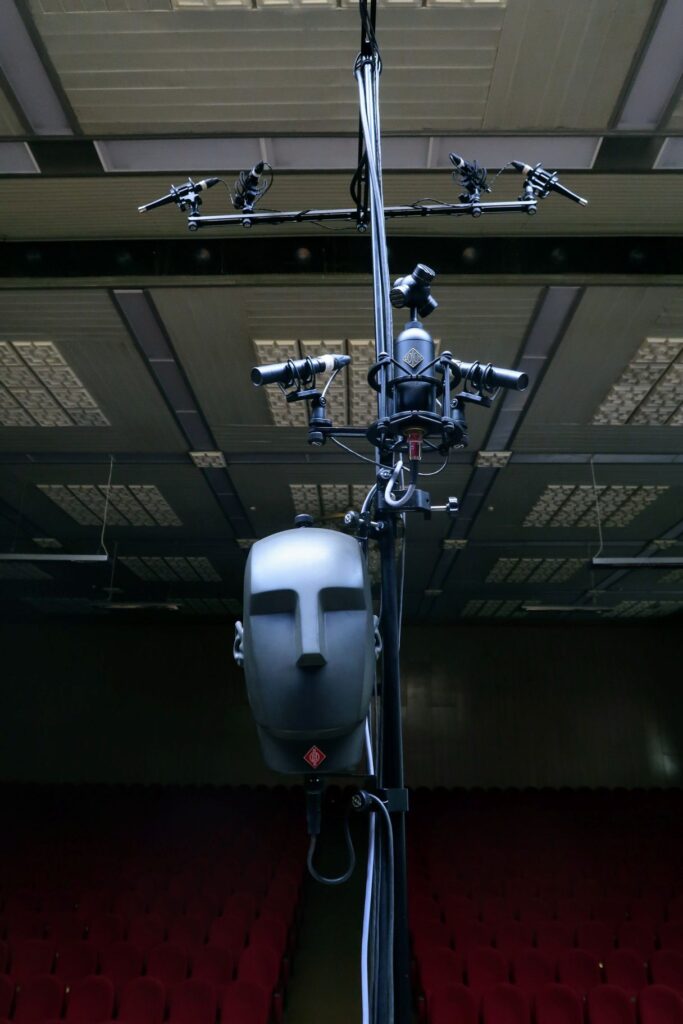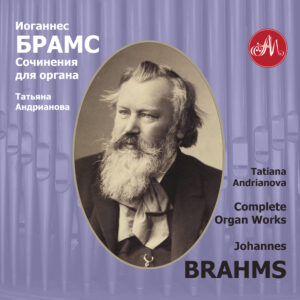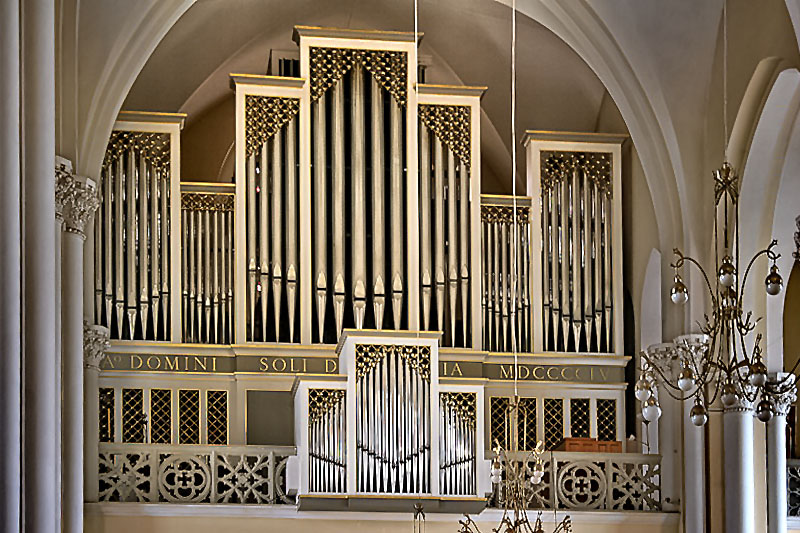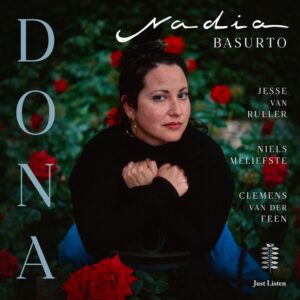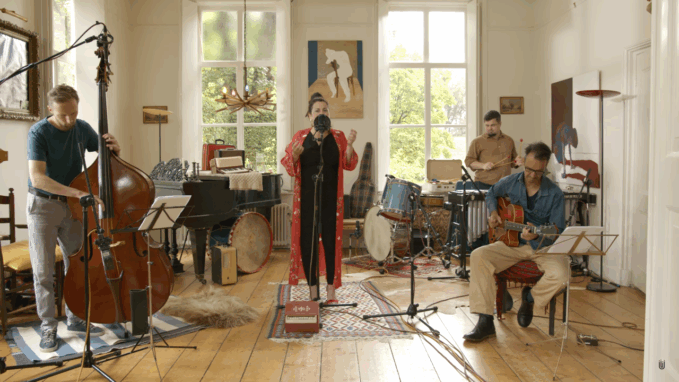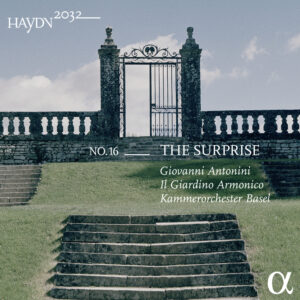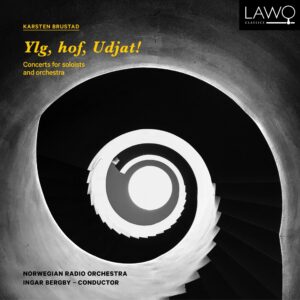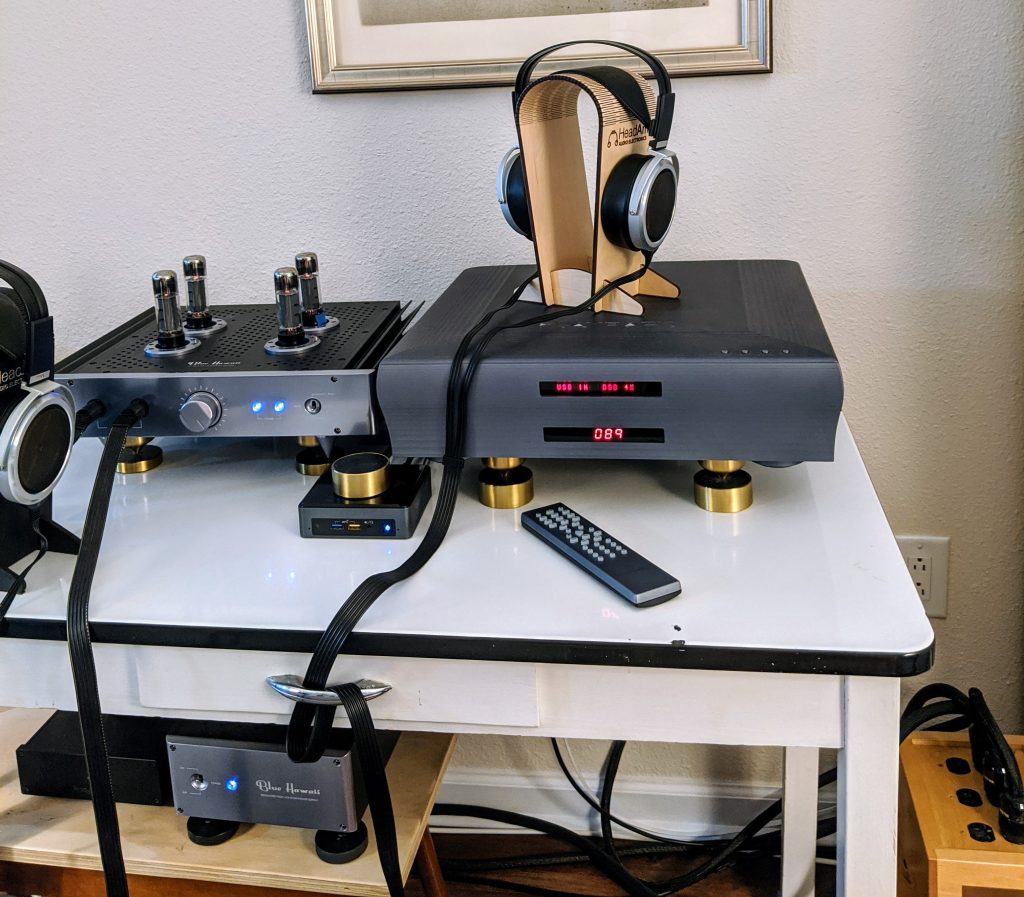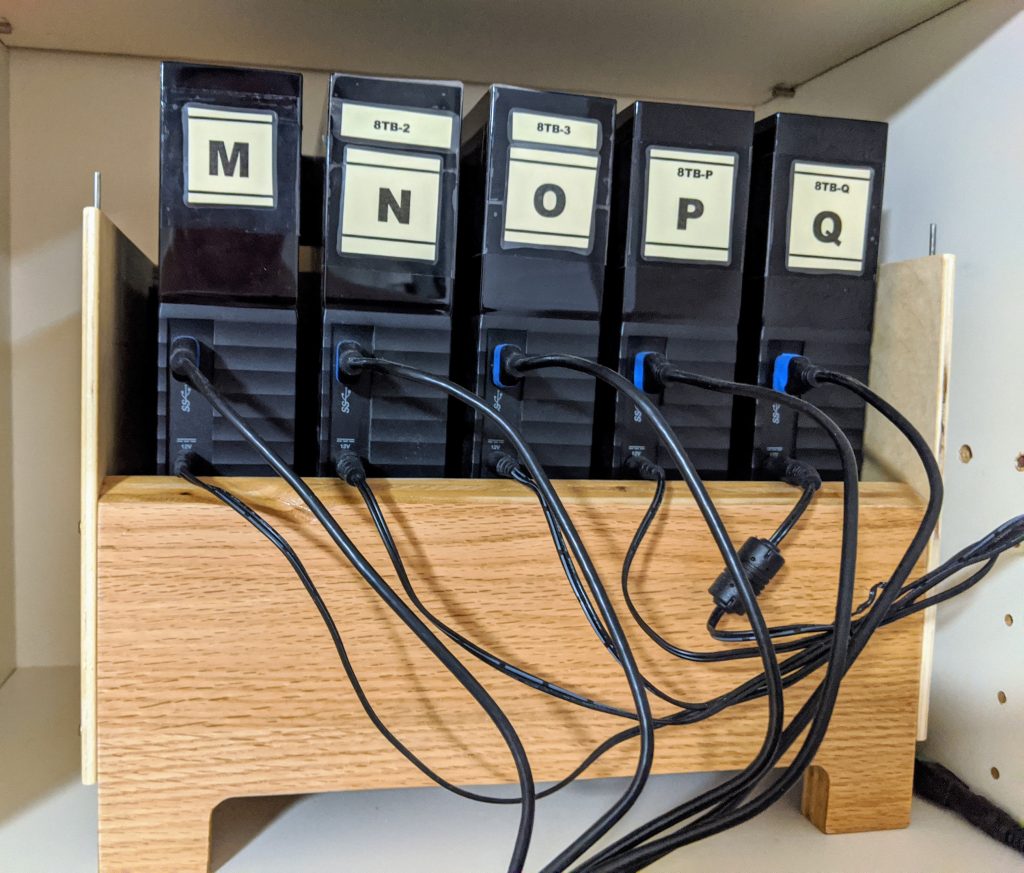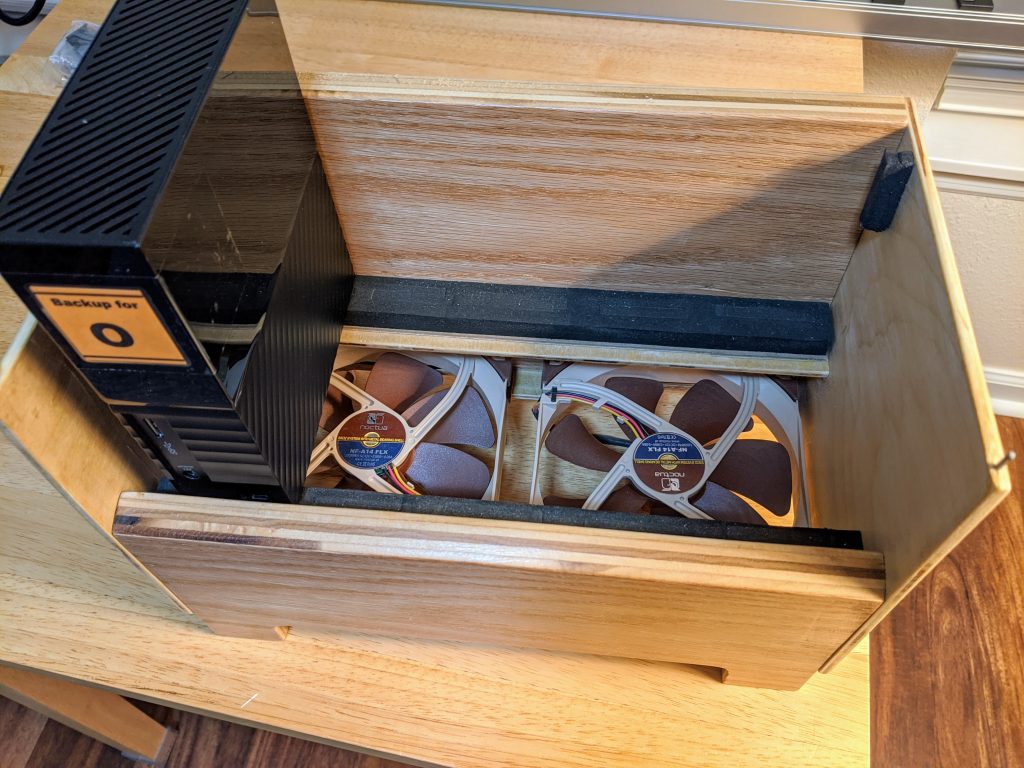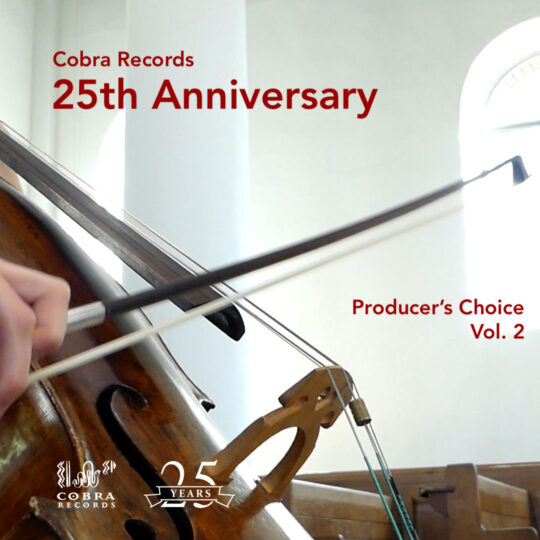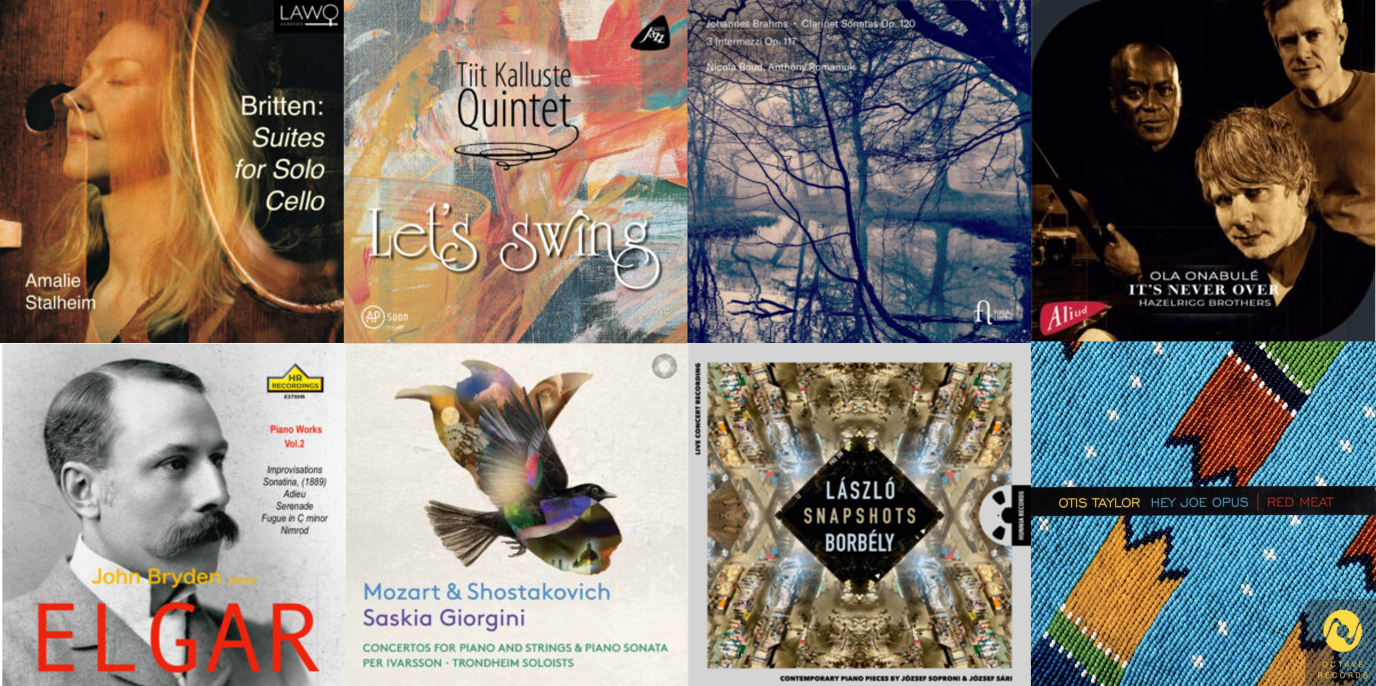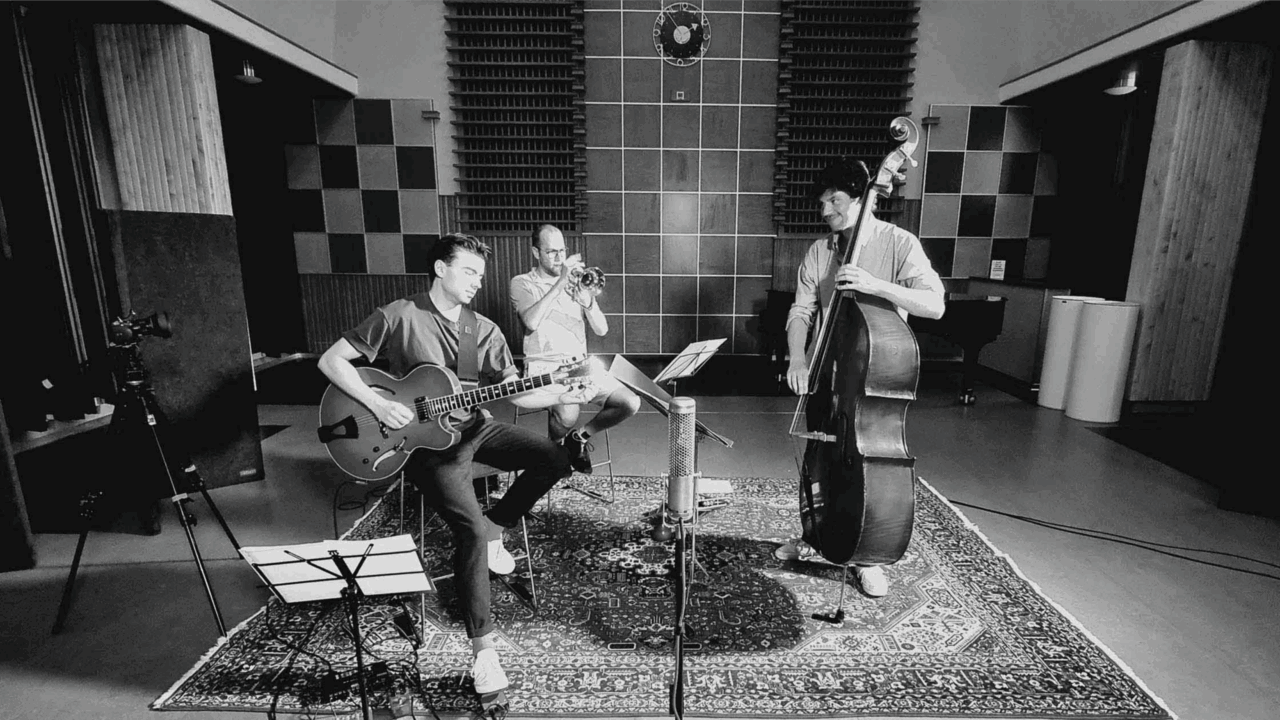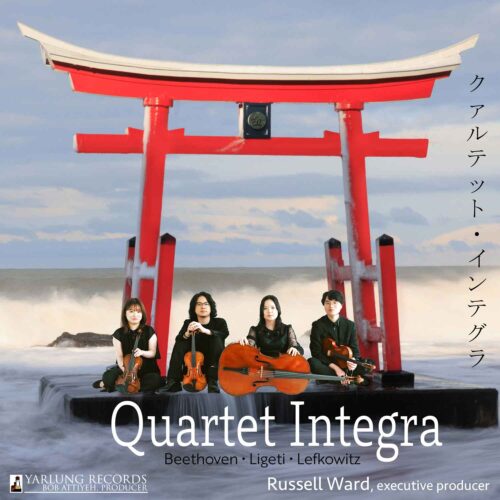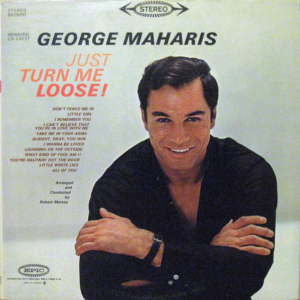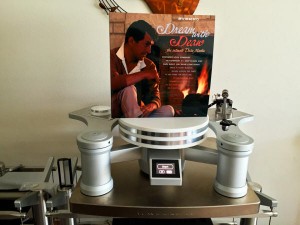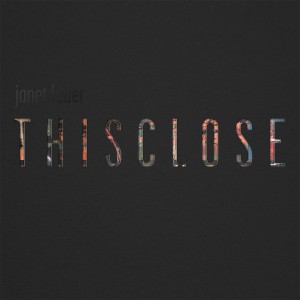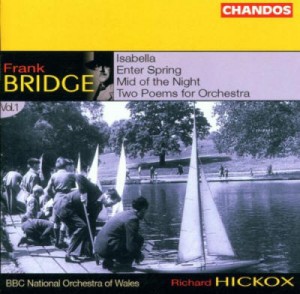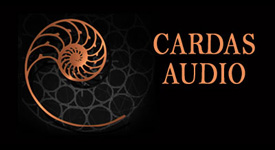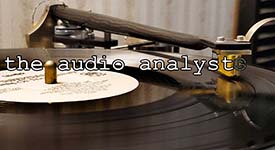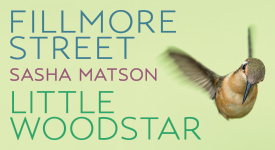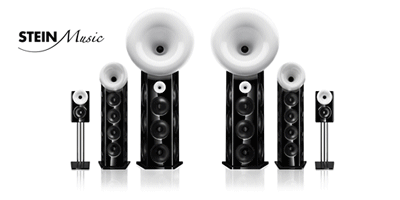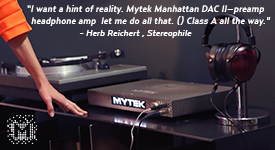This Recent Finds includes an eclectic selection of music from the NativeDSD catalog. What's the common thread? In each case, I found the music engaging, the performers/performances excellent, and the sound quality at a very high standard. Beyond that, it is highly varied group of albums. Frans de Rond us gives another of his marvelous "Single Mic" jazz recordings. Alexey Pogarskiy provides both a stunningly good orchestral concert of Rachmaninoff and a challenge-your-audio-system demonstration quality recording of large organ on his Artes Mirabiles label. Just Listen Records has an intimate recording of voice and small ensemble drawing on many diverse cultural influences. IBS releases an excellent recording of duos for piano and violin. Pentatone brings intensely creative works by Ginestera performed by the ever-excellent Miró Quartet. And finally there is Haydn from Alpha Classics and music of the 21st century from Lawo. I hope you will find something here to enjoy.
Lorquiana, Ana Maria Valderrama, David Kadouch. IBS Classical 2025 (192k*, Stereo) HERE
With this album, IBS Classical delivers yet another excellent recording of intriguing music performed by outstanding musicians. If you are not following the releases from IBS Classical, I highly recommend you pay attention to their catalog. Recorded in the exceptionally fine acoustics of Auditorio de Zaragoza, Sala Mozart, this is a beautiful recording, lovingly performed.
Ana María Valderrama, violin, and David Kadouch, piano, have selected an interesting program of music linked in one way or another with the musical personality of Andalusian poet, playwright, and composer Federico Garcia Lorca (1898-1936).
There is one central work by Garcia Lorca, six selections from Canciones Populares Españolas, popular Spanish folk songs which he incorporated into his poems and plays. These are delivered via an exceptional arrangement by Alberto Martín for violin and piano. The Garcia Lorca pieces are surround by music for violin and piano from Poulenc "a la mémoire de Federico García Lorca," and from Alizia Terzian, Manuel de Falla, and Reynaldo Hahn.
From the liner notes: "Poulenc's sonata illustrates the positive welcome of the political and social significance of Lorca's figure in France, where it became a symbol of freedom and resistance. Hahn's work, on the other hand, takes us to those happy and ephemeral Twenties of the last century that Lorca also enjoyed. Alizia Terzian's song shows the powerful influence that the poet has had in the Hispanic American context. The famous La vida breve passage from Falla is a nod to the veneration Garcia Lorca professed towards Falla."
Ana María Valderrama and David Kadouch perform these works with technical assurance, but more importantly with passion, insight, and a loving touch. Highly recommended.
Ginastera String Quartets, Miró Quartet. Pentatone 2025 (96k, Stereo)
Argentinian composer Alberto Evaristo Ginastera (1916-1983) is one of the most important 20th century composers. Some will say "of the Americas," but I think his importance is global. The release from the Miró Quartet presents his three string quartets spanning his output over a lifetime, from his Objective Nationalism period (1934-1948) with his Quartet No. 1, Op. 20 (1948), to his Subjective Nationalism period (1948-1958) with his Quartet No. 2, Op. 26 (1958), to his final Neo-Expressionism period (1958-1983) with Quartet No. 3, Op. 40 (1973).
All of these works are intriguing, demanding, and intensely creative.
The Miró Quartet plays them with clarity, passion and technical mastery. The music making here is sublime.
The first day with this album, I listened to the first two quartets, totally absorbed by them. But I could not continue to the third. I was emotionally drained. I needed to stop and regroup. In both, the music whirled, it soared, it beat against the clouds, it commanded attention—full bore, nonstop. Intense.
The next day, I was prepared to launch Quartet No. 3. And I am glad I waited because it was yet another powerful, compelling work. This time with vocals by soprano Kiera Duffy. Inspired by Schoenberg's use of the soprano voice in his Second String Quartet, this piece sets texts from poems written by three famous Spanish twentieth century poets: Juan Ramón Jiménez, Federico García Lorca, and Rafael Alberti. The texts deal with the transformative power of music, the intensity of sensual love, frightening visions of war, and a deep pervasive strain of nostalgia. Ginastera makes incredible demands of both singer and string players. The soprano voice must make a shocking and dramatic evocation of the text. But, the text must be delivered "with both virtuosity and subtlety, delicacy and power, and an almost superhuman control," writes Miró Quartet member John Largess.
Kiera Duffy delivers in spades—what a glorious vocal performance set against, and interplaying with, the dramatic backing of the string quartet. I've not so greatly enjoyed a female voice in modern classical music performance since Jan DeGaetani.
And the Miró Quartet matches her performance in excellence upon excellence upon excellence.
This is music not for the faint of heart. But it is marvelous in its unbridled willingness to be atonal, to attack with violence, to combine delicacy with intensity, to contrast beautiful lyricism with sharp astringency. Highly recommended.
From Now On [One Microphone Recording], Paul Berner, Tim Langedijk. Sound Liaison (DXD 32-bit, Stereo) Edit Master Sourced HERE
When two outstanding musicians who understand and respect each other so well, and one superb master of audio recording, and a single microphone come together, absolute magic is the result. That's what we have in this new album from Tim Langedijk and Paul Berner, with the incomparable Frans de Rond. Add to this ensemble a great natural acoustic space, a single Josephson C700S microphone, and some great music selections, and you'll find me a very happy camper just listening to the tunes.
As producer Peter Bjørnild writes, "Langedijk and Berner have reached a level of musical maturity where less truly becomes more...stripping away effects, amplification, and studio trickery to focus solely on their instruments and musical dialogue." Then strip away the traditional studio in exchange for a lovely natural acoustic space like the legendary Studio 2, MCO Hilversum, Netherlands, and beautiful, natural, acoustic music emerges.
The intimacy, the spatial presentation, the "you are there" realism of this recording is simply phenomenal. There is almost a "reach out and touch" realism to this recording. Like, they are really right there in your space before you. We are not gifted with many recordings as true and natural as this one.
And this is one of the joys about well-engineered "single microphone" recordings, about which a future article is planned to further explore. For now, just get this and enjoy.
Tim Langedijk, guitar, and Paul Berner, double bass.
Rachmaninoff The Bells & Symphonic Dances, Rachmaninov Symphony Orchestra, Alexey Morgunov. Artes Mirabiles 2025 (DXD 32-bit, Stereo, MCh, Immersive) Edit Master Sourced HERE
Sergei Rachmaninoff considered The Bells and Symphonic Dances his finest works. The Bells, a symphonic poem composed in 1913 in Russia, is a luxurious and prophetic work—an epic odyssey from birth to death. The Symphonic Dances, written in the United States in 1940, became the composer's final dialogue with his own fate, music, and the world.
Both works are beautifully performed here by conductor Alexey Morgunov and his Rachmaninov Symphony Orchestra, together with choir and soloists. Both performances have a piquancy that few others possess. Perhaps it is the choir and soloists singing in their native Russian. Perhaps it is the long tradition of Russian orchestras. Whatever it may be, it all makes for an intriguingly different listening experience for these Western ears. And the performances are compelling, gratifying, totally satisfying.
If you are not paying attention to this Latvian label, Artes Mirabiles, I encourage you to start doing so. Founder and chief recording/mastering engineer Alexey Pogarskiy has been doing some prodigiously good work. In an email conversation, Alexey told me that his goal is to make recordings in as lifelike manner as possible, to bring the listener immediately into the performance being recorded. He said, in part, "In this recording, I was trying to make a recording of the most detailed orchestra sound like conductor and composer can hear it."
This is his first orchestral recording, and it is a herculean undertaking: full orchestra, large choir, three vocal soloists. Just a massive performance. And he pulls it off superbly.
I asked about his philosophy in microphone selection and setup to which he replied: "It was very important for me to make the 3D sound. So I'm happy to make the Auro-3D options for the new albums and hope to add it soon to all our back catalogue albums too. Hope I'm going also to add the Dolby Atmos option in the future. The best impression is with 3D sound of course!"
So, multichannel and immersive enthusiasts, take note!
To achieve the 3D image he seeks, he uses as his main stereo microphone the Neumann KU 100 Binaural Head. He then supplements this with some ambient microphones above the Head to capture "some small but very important ambient details." At orchestra level are three more microphones and "also a pair of microphones for soloists of course."
The results are impressive. The orchestra and voices are very natural sounding, with excellent ambience and rock solid imaging. And his commitment to recording in DXD provides a very satisfying degree of aural density and resolution. I recommend this recording to you most highly: terrific performances from the artists involved, and an excellent recording that does full justice to the musicians. Well done!
Experimentation for orchestral recording using Neumann KU 100 Binaural Head and ambient microphones. There are more microphones in this photo than Alexey was using for his recording because the microphone stand was being shared with another recording engineer using an independent set of microphones.
Brahms Complete Organ Works, Tatiana Andrianova. Artes Mirabiles 2023 (DXD, Stereo, MCh) HERE
Brahms did not compose extensively for the organ, and there are not a large number of recordings of his organ music. However, what he did compose is immensely good. Complex and densely polyphonic, his works explore the full capabilities of the organ and are heard best in a large, full range concert organ as played here. If you like organ, and you have a system that can plumb the depths of deep bass that 32' pipes are capable of delivering, then this is an album to seek out!
Russian organist Tatiana Andrianova (b. 1972) delivers an excellent recital of the complete works. Almost an hour and ten minutes of great variety and virtuosity performed on the Orgelbau Kuhn AG (Switzerland) organ (1955) in the Cathedral of the Immaculate Conception of the Holy Virgin Mary in Moscow, one of the largest organs in Russia.
Kuhn Organ in the Cathedral of the Immaculate Conception of the Holy Virgin Mary in Moscow (Wikimedia Commons, Public Domain)
The cathedral's pipe organ was built in 1955 by Orgelbau Kuhn AG of Männedorf, Switzerland, for the Reformed Evangelical Basel Münster Cathedral in Basel, Switzerland. The Swiss cathedral donated the organ, dismantled it in 2002, and all pipes but without the largest—Nr. 65 principal bass 32', 10 m (32 ft) long—were transferred to Moscow. The original 10-metre, 32' pipe stayed in Switzerland and was built into a new organ. This pipe, capable of reproducing a tone of 16.35 Hz, the bass note C0 four octaves below middle C, was recreated in Moscow and added to the cathedral's organ in 2009. You can hear it to very good effect throughout this recording, if your audio system is capable of delivering low bass.
Artes Mirabiles' founder and chief recording/mastering engineer Alexey Pogarskiy has captured this organ very well. This recording will challenge your audio system's ability to reproduce the full frequency range extension and and dynamics captured in this recording. I know my system is significantly challenged to keep up with the low bass. The electrostatic drivers eventually say "no mas." So I can't tell you first hand just how deep this organ and this recording are actually going. But it is way down there in the subterranean grottoes, as the organist exercises the full registration available.
And so, we have an excellent complement of instrument and artist in the performances of these Brahms organ pieces. Together with the excellent recording quality, this is a release to seek out if you are a fan of great organ performances.
DONA, Nadia Basurto, Clemens van der Feen, Jesse van Ruller, Niels Meliefste. Just Listen Records 2025 (DXD 32-bit, Stereo) Edit Master Sourced HERE
Just Listen Records consistently offers recordings of very high musical merit in excellent sound quality. I always pay attention when they announce a new release. DONA (Catalan for “woman”) is an intimate journey through the emotional and spiritual landscape of a woman's life—told through the voice, words, and perspectives of singer Nadia Basurto, with musicians Clemens van der Feen (from the Feenbrothers band) on string bass, Jesse van Ruller on guitar, and Niels Meliefste on marimba and percussion.
Drawing on personal experience, improvisation, Catalan and Spanish poetry, and the rich traditions of Latin jazz, art song, and folk, Nadia Basurto weaves weaves a collection of tales of love, resilience, dreams, and memory. Just Listen describes the music in a way I cannot better: "Basurto's lyrics and vocal delivery reflect a life lived in multiple emotional registers. There is pain here, and tenderness. There is sadness, but also celebration. The recurring theme is not resolution but presence: showing up to life as it is, without filters or masks. DONA doesn't offer easy catharsis. Instead, it invites us to inhabit complexity, to feel deeply, and to find beauty in what is unresolved."
This is an album not neatly categorized. Jazz, milonga, folk, free improvisation, and lullaby form a fluid continuum through which the voice leads and fellow musicians follow, improvise, or occasionally assume the lead. And so, this is an album not neatly categorized. World music is perhaps most apt category if one is needed, for this is an album filled with music that can speak to us all, drawing on a complexity of influences.
Recorded by Jared Sacks in the very relaxed informal setting of his living room, the sound is intimate, unprocessed, direct. It is the perfect setting for these songs, for this sharing. May I say, simply, that I enjoy this album. And I've enjoyed every playing over multiple days. It's a keeper that I shall return to hear. And it is an album which I warmly recommend you check out.
For a flavor of this album, listen to the opening track of this album, "Una Dona," in this YouTube video filmed by Jonas Sacks:
DONA recording session.
Haydn 2032, Vol. 16 of the Complete Symphonies, Giovanni Antonini, Il Giardino Armonico, Kammerorchester Basel. Alpha Classics 2024 (192k, Stereo) HERE
Recording the complete symphonies of Franz Joseph Haydn is a prodigious undertaking. And this is what conductor Giovanni Antonini and his two ensembles have taken on to complete in time for the 300th Anniversary of the Birth of Haydn in 2032. Begun in 2014, the series is now up to Volume 17 with another six planned. Between the autumn of 2014 and 2032, all of Haydn's symphonies are to be performed and recorded in the course of nineteen concert seasons, with two projects per year
Organized, produced and financed by the Joseph Haydn Foundation in Basel, two performances per year were scheduled in order to record all 107 of the composer's symphonies by Il Giardino Armonico and Basel Chamber Orchestra under the artistic direction of Giovanni Antonini.
I've recently begun following along, and NativeDSD is diligently working with Alpha Classics to obtain all of the volumes issued thus far. The vagaries of the distribution process found NativeDSD only beginning to receive these recordings this year, with Volume 16 above. They now have Volume 17 and are getting the back issues starting with Volume 1 and working forward releasing about one new volume per week until they catch up (hopefully).
I've now heard Volumes 1-4, 16 and 17. They are uniformly delightful. Energetic, very well played, and filled with fun and passion—just as Haydn should be performed.
Conductor Giovanni Antonini is a master with music of the Baroque and Classical periods. He is the music director for both Il Giardino Armonico and Kammerorchester Basel who share performance duties alternately across the volumes. In this Volume 16, both ensembles are engaged to fill out the requirements for the larger forces required to perform Symphonies 90, 94 ("Surprise"), and 98. And, yes, the Surprise is very nicely done.
The performances are of the historically informed variety, which I greatly enjoy. If that is not your cup of tea, then elsewhere you should seek. But for me, these are nigh on perfect in their interpretations and execution. A huge hurray from this listening household.
And, a plus in my book, the series interweave works by Haydn with other composers. So, with each volume you will additionally hear one other composer's voice in addition to Haydn's. In this Volume 16 it is Rossini's "Sinfonia" from La Scala di Seta.
Highly recommended—the entire series, not just this volume.
Ylg, hof, Udjat! Concerts for soloists and orchestra by Karsten Brustad, Norwegian Radio Orchestra conducted by Ingar Bergby, with Various Soloists. Lawo Classics 2025 (DXD 32-bit, Stereo) Edit Master Sourced HERE
Here are three different concerti by Norwegian composer Karsten Brustad. All are from the first two decades of this century, and each is performed by the musician who commissioned the work. I found all three concerti immensely interesting and engaging. The soloists all perform with abounding energy and technical brilliance. And the orchestra is an apt and willing partner deserving particular kudos.
Ylg (2012) concerto for two flutes, piccolo and orchestra, is a commission from Co-Principal Flutist, Anne Karine Hauge with support from Norwegian Radio Orchestra. The title Ylg is from Norse mythology.
hof (2015) concerto for timpani and orchestra, is a commission from Principal Timpanist, Rune Halvorsen with support from Norwegian Radio Orchestra. The word hof is Old Norse, and has three meanings: possibility, discretion/ meaning/understanding and farm/ court/temple. The stage setup is with five timpani very visible as a soloist in front of an orchestra.
Udjat (2005) concerto for euphonium, electronics and orchestra, is a commission from Geir Davidsen and Tromso Symphony Orchestra. The euphonium is a brass wind instrument with valves, pitched in C or B♭ an octave below the trumpet, most commonly heard as the leading instrument in the tenor-bass range in military bands. The agility demonstrated by soloist Geir Davidsen on this instrument is remarkable. I am both surprised and very impressed by the skill demonstrated in performing this challenging piece of music.
Lawo recording engineer Thomas Wolden has provided yet another excellent recording of full orchestra. The recording is, as we've come to expect, very natural sounding, with excellent detail, and nicely balanced soundstage. The soloists have prominence, but they are not unduly spotlighted. Instead, they sound completely in the same acoustic space as the orchestra, which is something that often fails us with other recording engineers on other labels.
If you appreciate modern music compositions, you might also wish to check out these earlier articles:
Classical Music Composed Within the Past 25 Years
* Recording Resolution—I usually list here the resolution of the edit master file provided to NativeDSD since that is what I normally download for my personal listening on my primary audio system. NativeDSD will generate alternate resolutions of each album offered on its website, from 96kHz to 352.8kHz PCM and up to DSD512 and occasionally DSD1024. As always, I encourage you to choose the file resolution you believe is likely to sound best in your system. To that end, you might want to read some thoughts about why the highest resolution file may not be the best sounding file to download: Choosing the Best Sounding File Format with Free Sample Downloads

